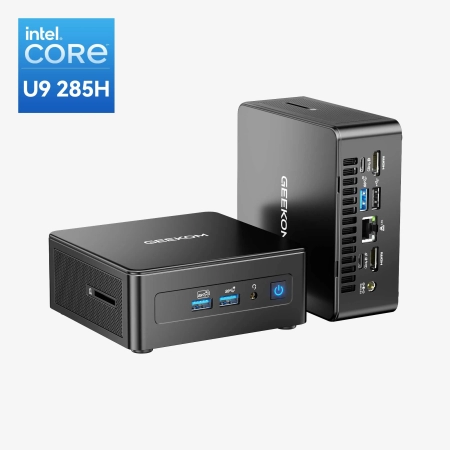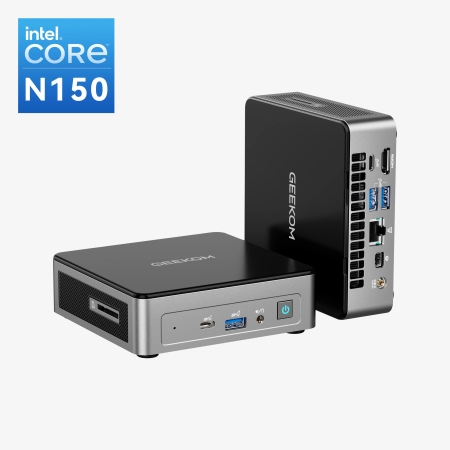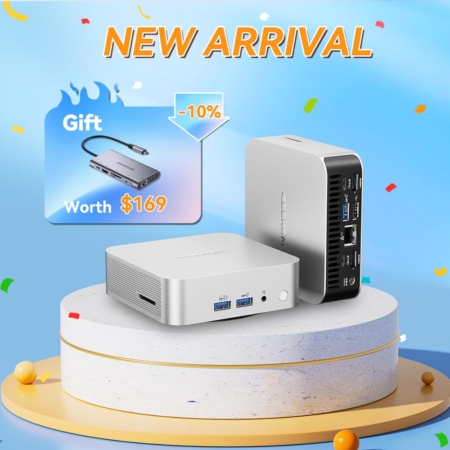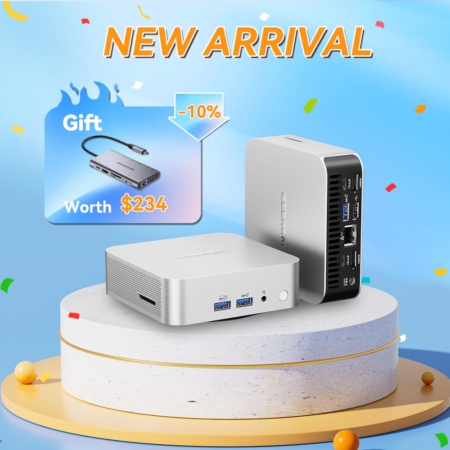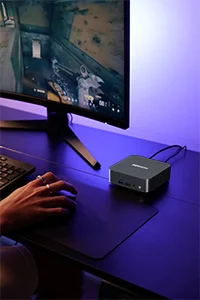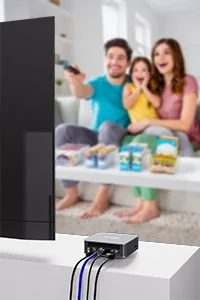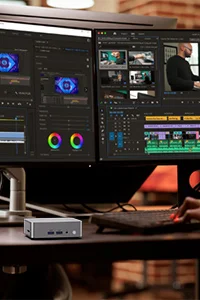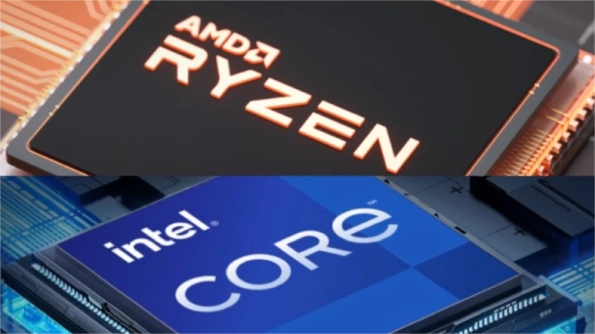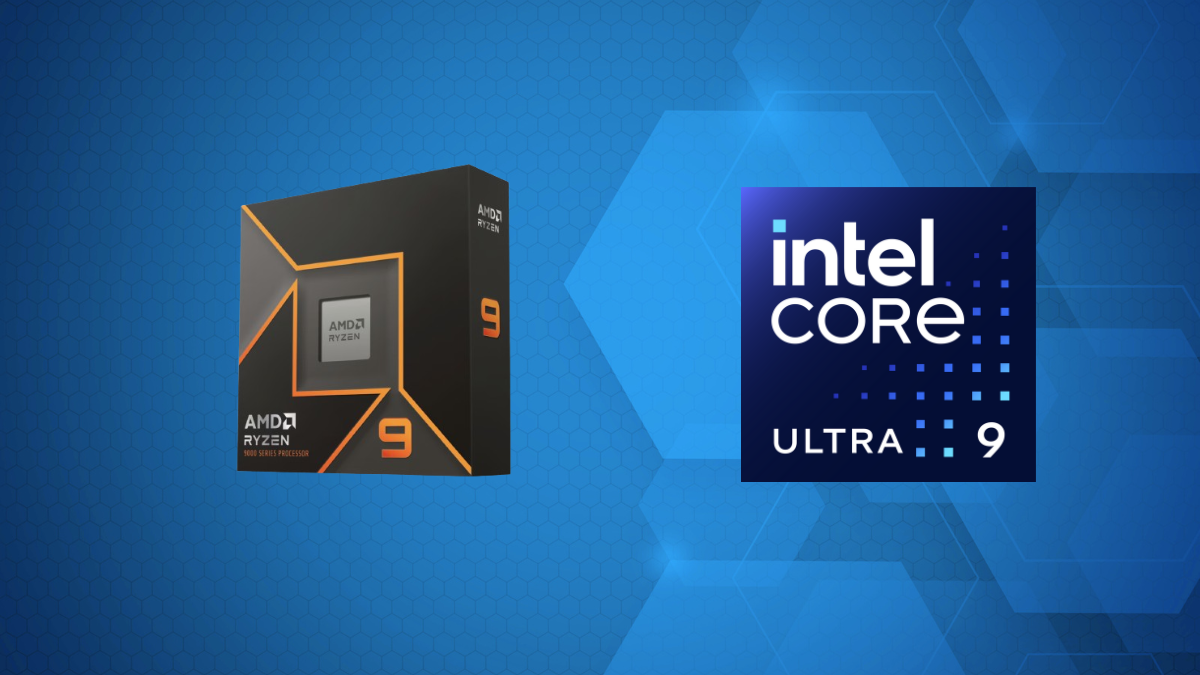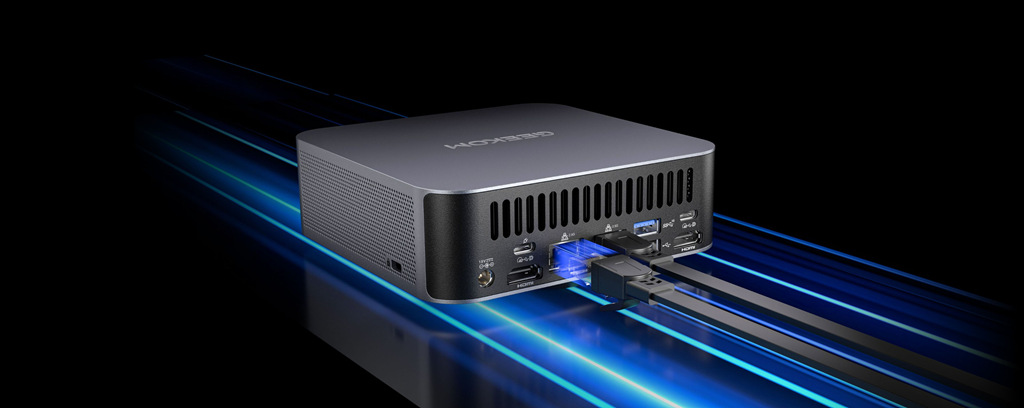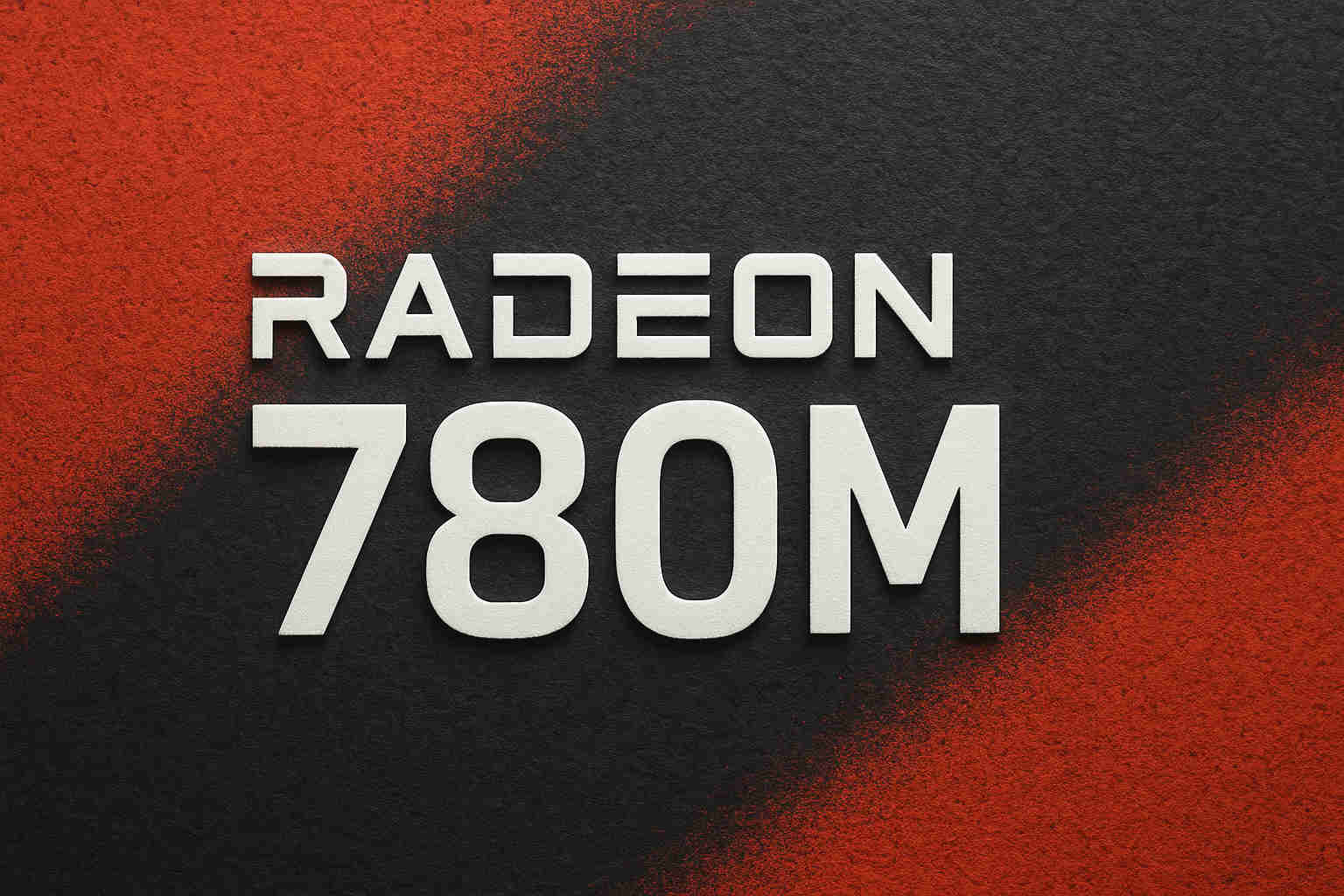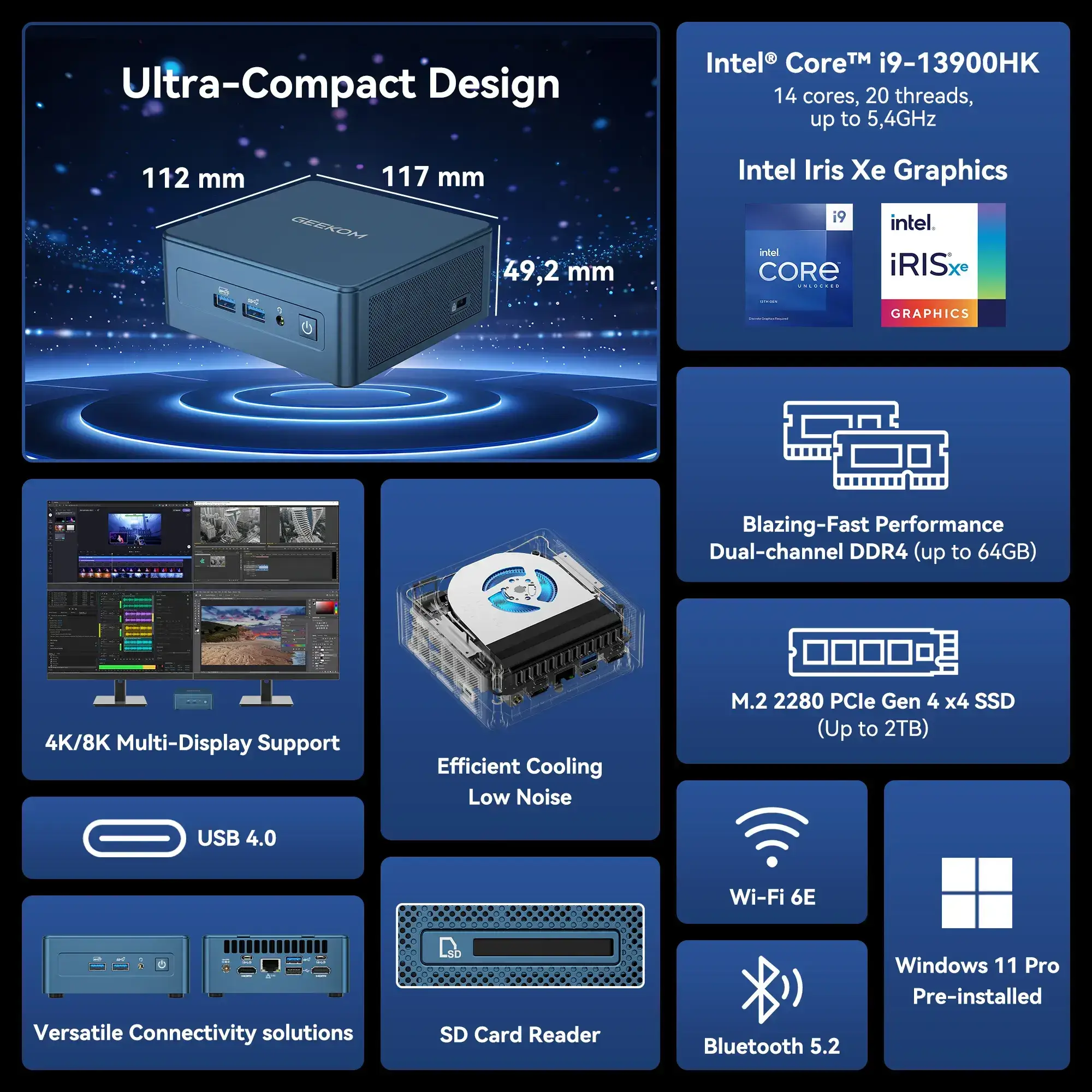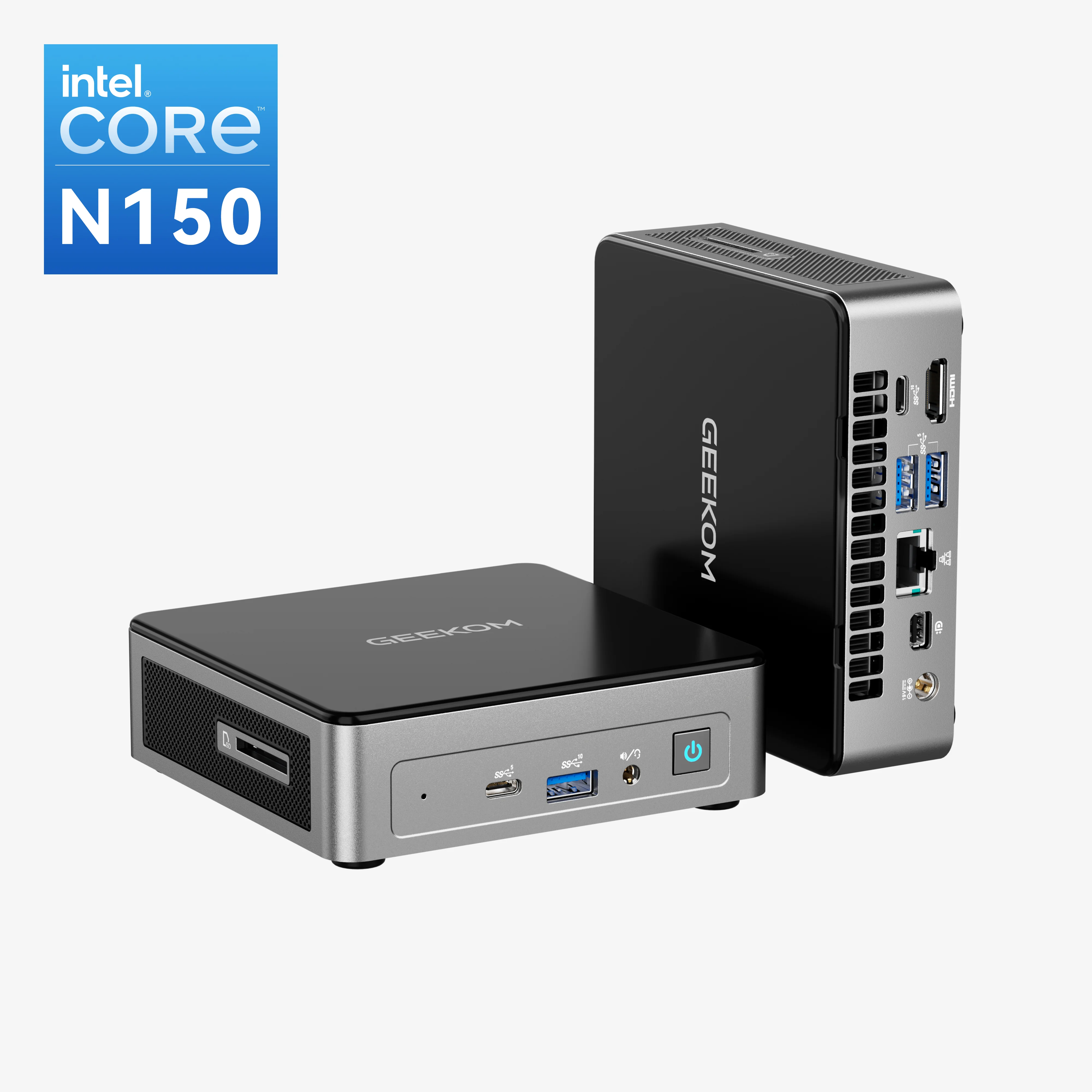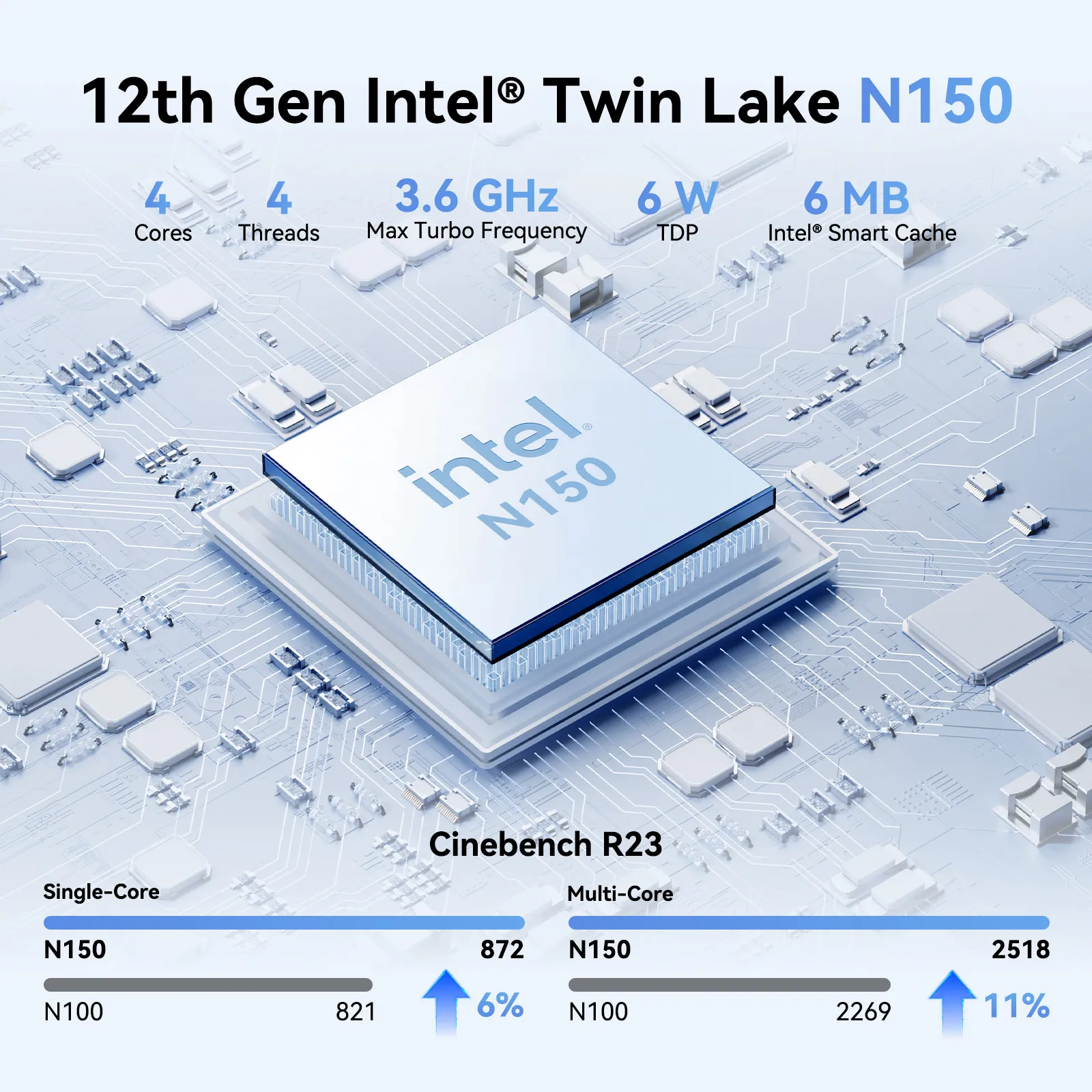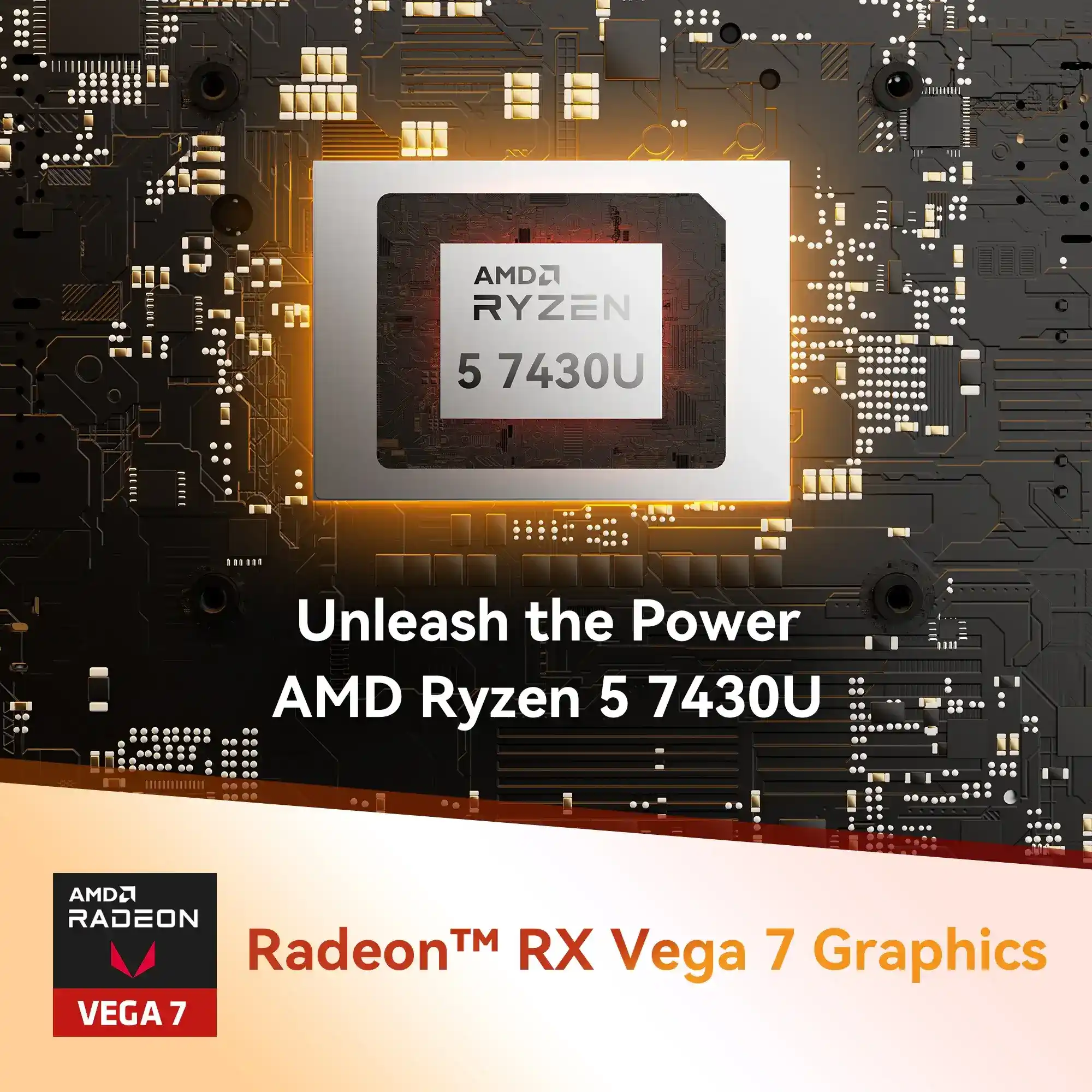In the ever-evolving landscape of mini PCs, the selection of a processor that strikes the perfect balance between power and efficiency is paramount for gamers and creators alike. AMD Ryzen and Intel Core processors stand as the two prominent contenders in this arena, each boasting unique strengths and characteristics. The analysis delves into the intricacies of AMD Ryzen 7 and Intel Core i7 processors, and how those processors work with mini PCs, meticulously comparing specific models such as the Ryzen 7 7840HS, Ryzen 7 6800H, Core i7-13700H, and Core i7-12650H, equipping readers with the knowledge to make an informed decision and select the champion that best suits their gaming and creation needs.
AMD ryzen 7 vs Intel i7 Performance Precision
CPU Cores and Threads
AMD Ryzen 7 processors generally offer more cores and threads than Intel i7 processors, providing better multitasking and parallel processing capabilities. This means that Ryzen 7 processors can handle more tasks simultaneously and are better suited for applications that can take advantage of multiple cores, such as video editing, 3D rendering, and scientific simulations.
For example, a Ryzen 7 processor with 8 cores and 16 threads can handle multiple demanding tasks simultaneously, such as rendering a video, encoding audio, and running a virus scan in the background, without experiencing significant slowdowns.
On the other hand, Intel i7 processors may have fewer cores but often have a higher clock speed, resulting in better single-threaded performance. This means that i7 processors can handle single-threaded tasks, such as gaming, web browsing, and office productivity, more quickly.
For instance, an Intel i7 processor with 6 cores and 12 threads may be able to provide smoother gameplay in single-threaded games, where the emphasis is on high frame rates and fast response times.
Graphics Performance
AMD Ryzen 7 processors feature integrated AMD Radeon graphics, which are generally more powerful than Intel’s integrated Iris Xe graphics. This means that Ryzen 7 processors can handle basic gaming and video editing tasks without the need for a dedicated graphics card.
However, for more demanding gaming and creation tasks, an AMD Ryzen 7 processor with a dedicated GPU is recommended. Dedicated GPUs offer significantly better graphics performance than integrated graphics, allowing you to play games at higher resolutions and settings and work with complex 3D models and video footage smoothly.
Power Consumption
AMD Ryzen 7 processors typically have a lower TDP (thermal design power) than Intel i7 processors, making them more energy-efficient. This means that Ryzen 7 processors generate less heat and consume less power, which can be an important consideration for mini PCs, which often have limited cooling capabilities.
The lower power consumption of Ryzen 7 processors also makes them better suited for battery-powered devices, such as gaming laptops and mini PCs.
AMD Ryzen 7 processors generally offer more cores and threads than Intel i7 processors, providing better multitasking and parallel processing capabilities. This means that Ryzen 7 processors can handle more tasks simultaneously and are better suited for applications that can take advantage of multiple cores, such as video editing, 3D rendering, and scientific simulations.
For example, a Ryzen 7 processor with 8 cores and 16 threads can handle multiple demanding tasks simultaneously, such as rendering a video, encoding audio, and running a virus scan in the background, without experiencing significant slowdowns.
On the other hand, Intel i7 processors may have fewer cores but often have a higher clock speed, resulting in better single-threaded performance. This means that i7 processors can handle single-threaded tasks, such as gaming, web browsing, and office productivity, more quickly.
Here’s a comparison table example highlighting the key features of four top contenders: AMD Ryzen 7 7840HS, Ryzen 7 6800H, Intel Core i7-13700H, and i7-12650H
| Feature | AMD Ryzen 7 7840HS | AMD Ryzen 7 6800H | Intel Core i7-13700H | Intel Core i7-12650H |
| Cores/Threads | 8/16 | 8/16 | 14/20 | 10/20 |
| Base Clock Speed (GHz) | 3.8 | 3.2 | 3.4 | 2.3 |
| Max Turbo Frequency (GHz) | 5.1 | 4.7 | 5.0 | 4.7 |
| Integrated Graphics | Radeon 780M | Radeon 680M | Iris Xe Graphics | Iris Xe Graphics |
| TDP (W) | 35 | 45 | 45 | 45 |
| Strengths | Efficiency, battery life | Content creation, multi-threading | Gaming performance | Balance of performance and efficiency |
| Weaknesses | Lower base clock speed | Higher TDP | Higher price | Lower base clock speed |
| Ideal for | On-the-go tasks, web browsing, light gaming | Video editing, content creation, multi-threading | Hardcore gaming, demanding applications | Everyday tasks, work, balanced performance |
Additional Considerations
Upgradability
Mini PCs are often not as upgradeable as traditional desktop PCs. This means that it may be difficult or impossible to upgrade components such as the CPU, GPU, or RAM in the future. Consider whether you may need to upgrade your system in the future before choosing a mini PC. If upgradability is important to you, you may want to consider a model with a more modular design or a larger chassis that can accommodate additional components.
Cooling
The performance of a mini PC’s cooling system is crucial for maintaining optimal performance and preventing overheating. This is especially true for gaming and creation tasks that require sustained high performance. The power consumption of the CPU and GPU is a major factor that affects cooling requirements. Mini PCs with more powerful CPUs and GPUs generate more heat and require more robust cooling solutions. If you plan to use your mini PC for demanding tasks, ensure that it has adequate cooling, such as a dedicated graphics card with its cooling solution or a larger chassis with improved airflow.
Connectivity
Ensure that the model you choose has the necessary ports and expansion slots for your needs. For example, if you need to connect multiple monitors, you will need a mini PC with multiple video outputs. If you need to use external storage devices, you will need a mini PC with enough USB ports or other storage expansion options.
By considering these additional factors, you can choose a mini PC that meets your specific needs and requirements.
Final Thoughts
The choice between AMD Ryzen 7 and Intel i7 processors for gaming and creation on mini PCs ultimately depends on your specific needs and preferences. Consider factors such as core count, graphics performance, power consumption, and specific model comparisons. If you’re looking for a mini PC with powerful AMD Ryzen or Intel i7 processors, GEEKOM mini PC must be a good option for you. GEEKOM offers a wide range of mini PCs powered by the latest AMD Ryzen and Intel i7 processors, providing exceptional performance for gaming, creation, and other demanding tasks to suit your specific needs and budget.
FAQ
1. What CPU is best for content creation?
Both AMD Ryzen and Intel Core processors offer excellent options for content creation. So the AMD Ryzen series provides more cores and threads, it is good for multitasking and parallel processing tasks, and the Intel Core has higher single-threaded performance and better-integrated graphics. Ultimately, the best CPU for content creation depends on your specific needs and preferences.
2. Is AMD or Intel better for programming and gaming?
For programming and gaming, both AMD Ryzen and Intel Core processors are viable options. AMD Ryzen processors offer more cores and threads for multitasking and parallel processing tasks, while Intel Core processors have higher single-threaded performance and better-integrated graphics for gaming and programming tasks that benefit from high single-threaded performance. The best choice depends on individual needs and preferences, considering factors like core count, clock speed, graphics performance, and budget.
For more information about the Intel or AMD CPU series, please see here: Intel series blog and AMD series blog.

Ted Needleman
Ted Needleman has been writing reviews and columns on computers since the late 1970s. He has been a programer, DP Manager, Accountant, the Editor in Chief of a technology magazine, and the Director of a printer and scanner test lab.


